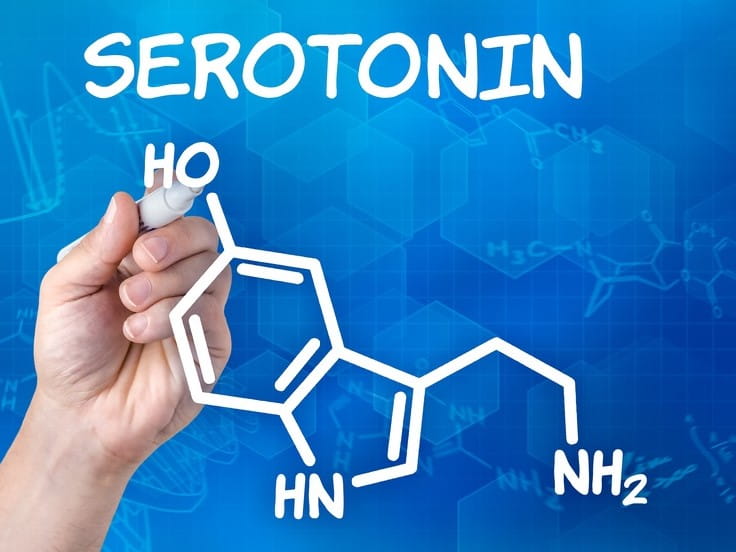SNRI antidepressants: Know the risks

The Bottom Line
SNRIs are a class of antidepressants. A rare but potentially very serious side effect of SNRIs is serotonin syndrome, which can occur when SNRIs are taken with other drugs. Like all antidepressants, SNRIs should not be abruptly stopped. Careful tapering of the dosage can minimize the risk of withdrawal symptoms.

What are SNRIs?
Serotonin and norepinephrine reuptake inhibitors (SNRIs) are a class of drugs used primarily to treat depression. Depression is a major public health problem. According to Centers for Disease Control and Prevention (CDC) data from 2021 to 2023, 13.1% of Americans 12 years of age or older suffered from depression.
How do SNRIs work?
There are several classes of antidepressant drugs available to treat depression. Selective serotonin reuptake inhibitors (SSRIs) like fluoxetine (Prozac) and sertraline (Zoloft) are considered first-line treatment. SNRIs are similar to the SSRIs and include desvenlafaxine (Pristiq), duloxetine (Cymbalta), levomilnacipran (Fetzima), and venlafaxine (Effexor). Both SSRIs and SNRIs affect the actions of serotonin in the brain. Serotonin is used by brain cells to communicate with each other and is important for regulating mood, sexual desire, appetite, and sleep. The main difference between the SSRIs and the SNRIs is that SNRIs also affect the actions of norepinephrine in the brain. By altering the actions of serotonin and norepinephrine, SNRIs can have positive effects on mood. Some people might only need an antidepressant for a short time, while others might need lifetime treatment.
What are the side effects of SNRIs?
The most common side effects are upset stomach, dry mouth, dizziness, headache, and sweating. Other SNRI side effects include fatigue, constipation, trouble sleeping, less sexual desire, and loss of appetite. When taken in overdose, SNRIs can cause seizures and dangerous changes in heart rhythm.
Some experts believe that antidepressants can increase suicidal thoughts or actions in some children, teenagers, and young adults during the first few months of treatment or when changing doses. During these times, patients should be closely monitored.
A rare but serious side effect of SNRIs is serotonin syndrome. This potentially life-threatening condition is caused by too much serotonin in the body. Serotonin syndrome usually occurs when someone is taking more than one drug with effects on serotonin. Often a patient with serotonin syndrome will have recently started taking another antidepressant; however, other contributors to serotonin syndrome are less obvious and include illicit drugs such as cocaine and ecstasy and even dextromethorphan in over-the-counter cough syrups.
The early symptoms of serotonin syndrome are nausea, vomiting, diarrhea, sweating, agitation, confusion, muscle rigidity, dilated pupils, shivers, and goose bumps. In serious cases, the symptoms will progress to very high body temperature, seizures, irregular heartbeat, and coma. Someone who might be experiencing serotonin syndrome should not take any more medicine and should be taken to an emergency room right away.
What if my SNRI isn’t working well for me?
The balance of serotonin and norepinephrine effects is different for each SNRI. This means that if someone is not benefitting from an SNRI or is having side effects, changing to another SNRI might produce a better response.
Are SNRIs used for anything other than depression?
A unique characteristic of some of the SNRIs is their ability to improve chronic pain conditions such as neuropathy (nerve pain) and fibromyalgia. For this reason, SNRIs are often good options for depressed patients who suffer from chronic pain.
Are SNRIs addicting?
SNRIs are not addictive, but stopping the medication abruptly or repeatedly missing doses can cause withdrawal-like symptoms. Symptoms of SNRI withdrawal include dizziness, headache, flu-like symptoms, irritability, nausea, and diarrhea. Some people report the uncomfortable sensation described as “brain zaps”. This is triggered by an abrupt drop in serotonin and norepinephrine in the brain when the medication is stopped too quickly. Brain zap sensations are disturbing and uncomfortable to the patient, but they are not dangerous. To prevent this from occurring, it is important to take antidepressant medications as prescribed and to work with your doctor to gradually taper your dosage if the drug is to be stopped. If uncomfortable withdrawal symptoms occur in spite of a gradual taper, a slower reduction in dosage may be necessary. It may take weeks to months to manage the symptoms associated with antidepressant withdrawal.
Will an SNRI interact with my other medications?
Like most antidepressants, SNRIs can interact with alcohol and other medications. Ask your doctor, pharmacist, or Poison Control to perform a drug interaction check every time you start or stop another medication while taking an antidepressant. Checking before starting a new medication is an important way to minimize the risk of serotonin syndrome.
What to do if someone If you think someone might have accidentally taken too much of an SNRI.
Immediately call Poison Control at 1-800-222-1222 or use the webPOISONCONTROL® online tool for guidance. Whether you call or logon, expert assistance is available 24 hours a day.
Pela Soto, PharmD, BSHS, BS
Certified Specialist in Poison Information
Kristina Yee, PharmD
Specialist in Poison Information
William G. Troutman, PharmD
Clinical Toxicologist & Professor of Pharmacy emeritus
Poisoned?
Call 1-800-222-1222 or
Prevention Tips
- Take SSRIs as prescribed and try to take them around the same time every day. Do not "double up" if you miss a dose or are feeling anxious.
- Do not stop taking an SSRI unless your prescriber provides you with a plan for gradually reducing the dosage.
- SNRIs can interact with alcohol and other medications. Ask your doctor, pharmacist, or Poison Control to perform a drug interaction check.
This Really Happened
An ER called Poison Control for guidance in managing a venlafaxine overdose. A 42-year-old man swallowed many of his immediate-release venlafaxine tablets about 2 hours earlier. He had been on the medication for a long time. The man looked fine, but his heart rate (HR) was increased to 115–120 beats per minute.
Since the man swallowed substantially more than the amount known to cause seizures, Poison Control recommended administering activated charcoal to bind the venlafaxine in his gut so it would not all be absorbed. Based on the drug and formulation, serious effects would be expected to start within 6 hours. To provide a margin of safety, Poison Control recommended watching the man for at least 6 hours. Poison Control also recommended an initial electrocardiogram (ECG) and using a cardiac monitor to detect changes in heart rhythm.
One hour later, the ER called Poison Control to report that the man had mild heart rhythm changes. Poison Control recommended continued monitoring and suggested the ER prepare to give treatment if the patient's heart rhythm worsened.
When Poison Control followed up 1 hour later, heart rhythm changes were still present, but the man’s HR had come down to 109 beats per minute. At 6 hours after the ingestion, the emergency physician reported that the HR was then less than 100 and the ECG showed normal heart rhythm. The man was eventually cleared for transfer to a psychiatric facility.
For More Information
References
Raj KS, Williams NR, DeBattista C. Mood disorders (depression and mania). In: Papadakis MA, Rabow MW, McQuaid KR, eds. Current Medical Diagnosis & Treatment 2025. 64th ed. McGraw-Hill; 2025:1035-1084.
Simon GE, Moise N, Mohr DC. Management of depression in adults: A Review. JAMA. 2024;332(2):141-152.
Stork CM. Serotonin reuptake inhibitors and atypical antidepressants. In: Nelson LS, Howland MA, Lewin NA, Smith SW, Goldfrank L, Hoffman RS, eds. Goldfrank’s Toxicologic Emergencies. 11th ed. McGraw Hill Education; 2019;1054-1064.
Poisoned?
Call 1-800-222-1222 or
Prevention Tips
- Take SSRIs as prescribed and try to take them around the same time every day. Do not "double up" if you miss a dose or are feeling anxious.
- Do not stop taking an SSRI unless your prescriber provides you with a plan for gradually reducing the dosage.
- SNRIs can interact with alcohol and other medications. Ask your doctor, pharmacist, or Poison Control to perform a drug interaction check.
This Really Happened
An ER called Poison Control for guidance in managing a venlafaxine overdose. A 42-year-old man swallowed many of his immediate-release venlafaxine tablets about 2 hours earlier. He had been on the medication for a long time. The man looked fine, but his heart rate (HR) was increased to 115–120 beats per minute.
Since the man swallowed substantially more than the amount known to cause seizures, Poison Control recommended administering activated charcoal to bind the venlafaxine in his gut so it would not all be absorbed. Based on the drug and formulation, serious effects would be expected to start within 6 hours. To provide a margin of safety, Poison Control recommended watching the man for at least 6 hours. Poison Control also recommended an initial electrocardiogram (ECG) and using a cardiac monitor to detect changes in heart rhythm.
One hour later, the ER called Poison Control to report that the man had mild heart rhythm changes. Poison Control recommended continued monitoring and suggested the ER prepare to give treatment if the patient's heart rhythm worsened.
When Poison Control followed up 1 hour later, heart rhythm changes were still present, but the man’s HR had come down to 109 beats per minute. At 6 hours after the ingestion, the emergency physician reported that the HR was then less than 100 and the ECG showed normal heart rhythm. The man was eventually cleared for transfer to a psychiatric facility.
